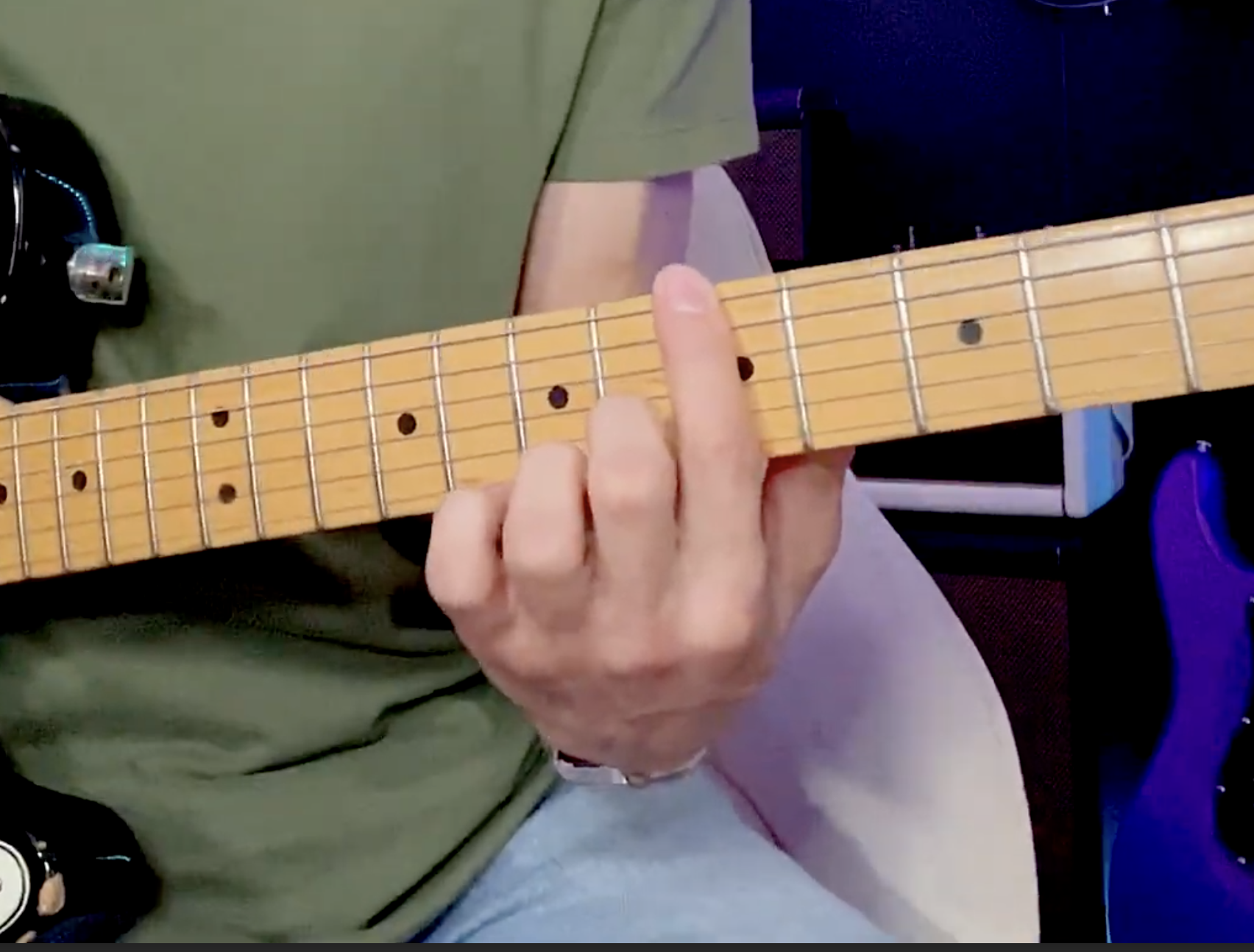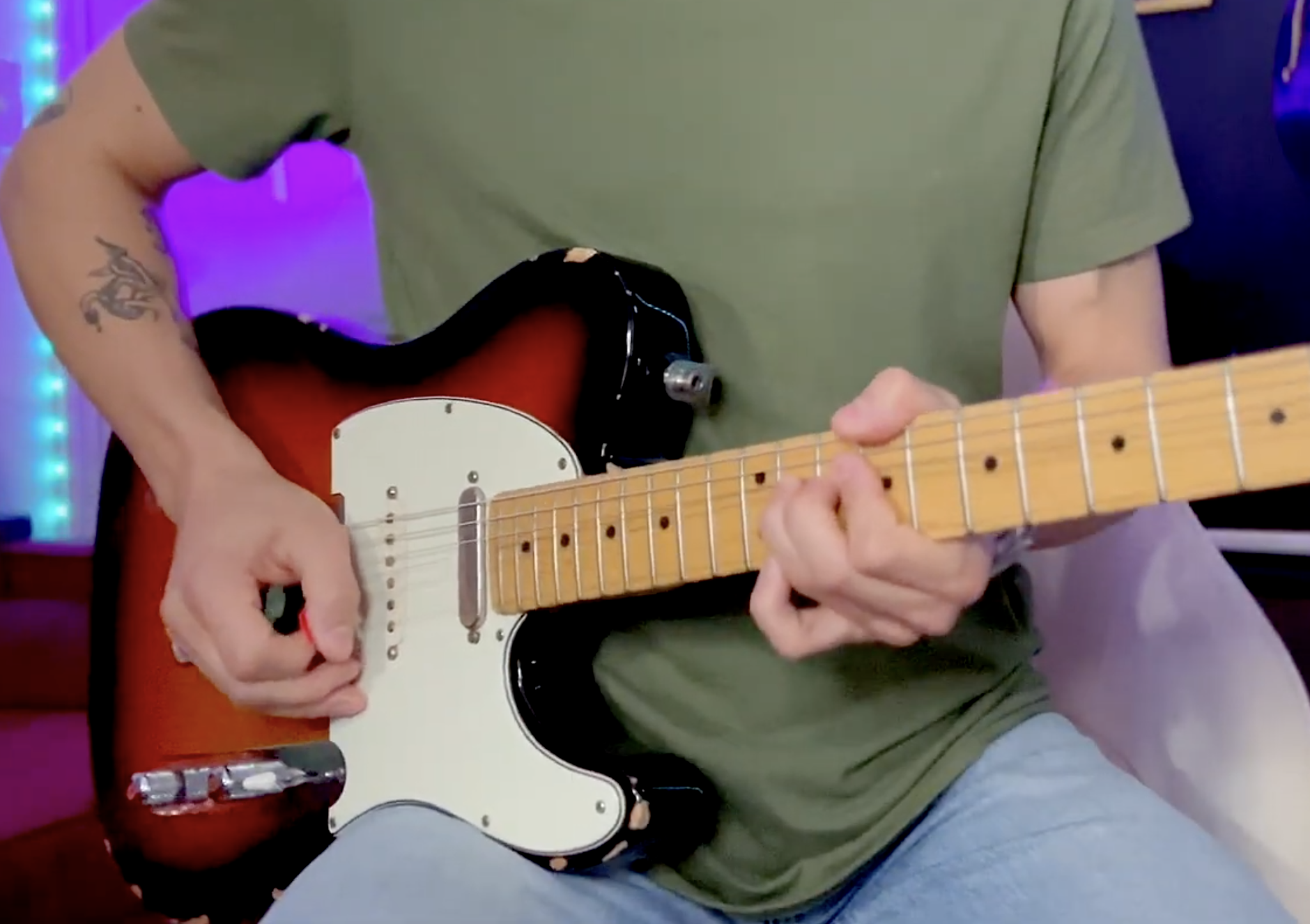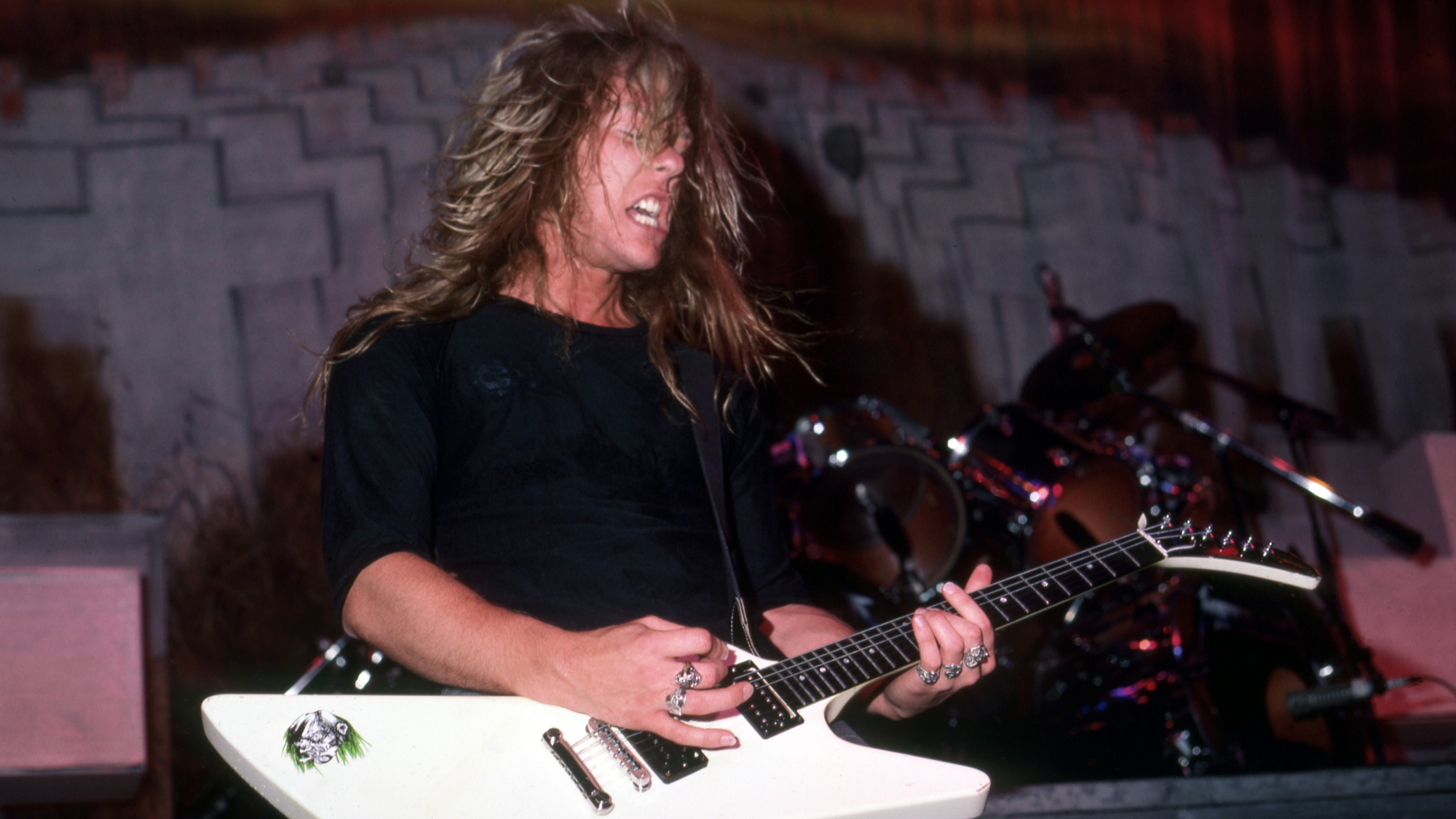How to get better at guitar – 10 proven ways to improve your playing fast
These small details can separate an amateur-sounding guitarist from a professional one
- 1. Fret cleanly
- 2. Don't over-fret
- 3. Keep downstrokes and upstrokes at the same volume
- 4. Strengthen all four fretting fingers, especially the fourth finger
- 5. Master buzz-free barre chords
- 6. Reduce unwanted string noise
- 7. Nail your string bends
- 8. Match legato and picking volume
- 9. Play with a wide dynamic range
- 10. Keep your guitar properly tuned and intonated
Whether you’ve been playing guitar for a couple of years or just picked up your first axe, you’ve probably encountered technical hurdles that make you sound less polished than you’d like.
Maybe your bends are slightly out of tune, or your barre chords don’t ring cleanly. These small details can separate an amateur-sounding guitarist from a professional one.
The good news? Most of these issues are easy to correct once you identify them.
In this lesson, we’ll cover 10 key zones where many players struggle and provide straightforward solutions to help you sound better immediately.
These aren’t complex theoretical concepts or advanced shred techniques – just fundamental adjustments that will enhance the quality of your playing across the board. Let’s dive in!
1. Fret cleanly
Finger placement is crucial for good tone. If you press down directly in the middle of the fret, you’ll need to apply greater pressure to get a clear note, which can cause pitch issues and lead to fatigue. If you’re too close to the fretwire behind your finger, you might get note buzzing or an almost dead note.
How to fix it: Aim to place your finger just behind the fretwire (as highlighted in the photo below). This requires the least amount of energy for a clean, in-tune note.
A great way to train this is by practicing slides – which teach you to intuitively land in the correct position as you move across the fingerboard.

Player who nails this: Tim Henson | Listen to: Playing God.
Notice how clean and articulate every note sounds, even at high speeds.
Watch this clip for a crash course in finger placement. Tim’s fingers are perfectly placed behind the fretwire throughout.
2. Don't over-fret
Many guitarists press down too hard, causing notes to go sharp. This is especially common among beginners who are still building finger strength and maybe overcompensating in pursuit of producing clear, strong notes.
How to fix it: Maintain a relaxed hand position and avoid excessive tension. Stay in contact with the fretboard (using your thumb, and first finger below the knuckle). This will make you feel supported and in control of your playing.
Player who nails this: John Mayer | Listen to: Vultures.
Every note is perfectly in tune, resonant, with controlled, expressive phrasing and steady pitch.
3. Keep downstrokes and upstrokes at the same volume
Uneven picking – where downstrokes are stronger than upstrokes – can make your playing sound inconsistent, especially in fast passages.
Don’t worry, it’s a common issue. We all start out playing more downstrokes than upstrokes, so you’ll need to incorporate some exercises that isolate the upstroke and help it to catch up.
How to fix it: Explore playing licks and riffs with more upstrokes than downstrokes to strengthen your weaker motion. A great exercise is using an upstroke-heavy triad pattern (two upstrokes for every one downstroke).
Player who nails this: Paul Gilbert | Listen to: Technical Difficulties.
Every note is crystal clear, no matter the picking direction. Paul’s alternate picking is always immaculate, with crisp and clear tone plus even dynamics.
4. Strengthen all four fretting fingers, especially the fourth finger
Many guitarists neglect their fourth finger, making certain runs and stretches more difficult, and limiting their potential down the road.
How to fix it: Practice hammer-ons and pull-offs between your second, third, and fourth fingers to develop independence.
Three-note-per-string scales are also a great way to improve this. Exaggerate the hammer-on/pull-off motion to isolate and train the finger muscles.

Player who nails this: Steve Vai | Listen to: For the Love of God
Intricate legato passages and vast positional shifts rely on strong finger independence and heavy use of the fourth finger.
5. Master buzz-free barre chords
Barre chords have made a lot of beginners give up, and these often find themselves much higher on their lists of difficult guitar techniques than you’d think. A lot of players struggle with getting their barre chords to ring out properly, especially the six-string E minor shape where the third string (G) often gets muted or buzzes.
How to fix it: Shift your wrist position to bring the thumb back behind the neck. This allows your first finger to straighten and apply even pressure across all six strings. You can check for clarity by plucking each string one at a time, like an arpeggio.
Still buzzing? Arch your remaining fingers (third and fourth) to avoid covering up the third string and therefore muting it.
Here's a photo showing an isolated first finger barre chord – get all six strings sounding clearly this way and you've nailed it!

Player who nails this: Billie Joe Armstrong | Listen to: Holiday
Punchy, clear barre chords drive the entire song; including the rich and robust chordal riff during the intro.
6. Reduce unwanted string noise
Even when playing the right notes, excess string noise can make your playing sound sloppy. This happens when unused strings vibrate due to sympathetic resonance or accidental contact.
How to fix it: Using both hands, there are four techniques for controlling string noise. You can use all of these zones independently or in tandem to improve your tone and playing!
Picking Hand
- When playing a part on the higher strings, allow the pad of your thumb to rest against the lower strings. You’ll still be able to pick the first, second and third strings, while using the thumb pad to palm mute.
- Let your unused picking-hand fingers rest on the upper strings when playing in lower registers.
Fretting Hand
- Use the underside of your fretting finger to mute higher strings. When playing in the pentatonic box for example, you can let the flesh below the knuckle on your first finger rest against the higher strings, helping to mute them and control not only ringing, but also prevent inadvertent contact.
- Use your fretting hand fingertip to mute the string directly below the one you’re playing. For instance, when sliding from the 7th to the 9th frets on the third string, let the tip of your first finger rest against the fourth string. This keeps the fourth string from ringing or being struck accidentally.
Player who nails this: James Hetfield | Listen to: literally any song!
Fast, articulate playing with total control and zero unwanted noise. Battery, Blackened, and Master of Puppets stand out. Check out his technique's clarity during Battery from this live performance.
7. Nail your string bends
If your bends aren’t in tune, your playing will sound off, no matter how adequate your other techniques are. Many beginners don’t bend far (high) enough, and come up flat. Luckily, there is a quick fix that will unlock the world of string bending ten-fold.
How to fix it:
- Use multiple fingers behind the bending finger for extra support. Because the cutoff point of the string is the note we are fretting, adding extra fingers behind doesn’t alter the pitch or sound. Therefore, we can use our first and second fingers for added support when bending with our third finger (see the photo below).
- Check your target note by playing it first, then bending up to match.
- Practice bending half-step and whole-step intervals repeatedly without finger vibrato. Once you can consistently get the pitch bend correct, you can then add vibrato for color and extra emotion.

Player who nails this: Brian May | Listen to: Bohemian Rhapsody
May is a master string bender who favors very light-gauge strings (usually a set starting with a first string gauge of 0.08). His operatic bends are always perfectly in tune with vocal-like vibrato added. A true master of making the guitar sing.
8. Match legato and picking volume
When transitioning between picking and legato (hammer-ons, pull-offs), many players struggle with inconsistent volume. This makes fast runs sound uneven and limits your palette when improvising and playing solos.
How to fix it:
- Pick then hammer-on/pull-off. Pluck a note then hammer onto the same note attempting to match the output level. Over-exaggerate hammer-ons and pull-offs during practice.
- Alternate between picking and legato within the same phrase to match dynamics. Try playing your legato lines with picking and vice versa.
Player who nails this: Guthrie Govan | Listen to: Erotic Cake.
Guthrie’s slick legato lines blend seamlessly with a smooth and controlled pick attack.
9. Play with a wide dynamic range
If you play everything at the same intensity, your music will sound flat. Dynamics (playing from very soft to very loud) add expression and depth to your performance.
How to fix it:
- Take a simple phrase and play it gradually from pianissimo (pp) to fortissimo (ff).
- Experiment with light and heavy picking pressure and angles.
- Use your guitar’s volume and tone knobs for greater dynamic control.
Player who nails this: Eric Johnson | Listen to: Manhattan
Notice how Eric seamlessly transitions from soft, delicate passages to powerful, bombastic, overdriven lines.
He even manages to pull this off in live performances, a true master of touch and command.
10. Keep your guitar properly tuned and intonated
Even if your playing is perfect, poor intonation can make you sound out of tune, especially higher up the neck.
How to fix it:
- Always check your tuning before playing.
- Compare the open string with the 12th-fret harmonic on the same string using a tuner. If they don’t match, your intonation needs adjusting.
- Get your guitar professionally set up or learn to do it yourself.
Player who nails this: Every touring musician with a great guitar tech | Listen to: Your guitar teacher.
Now enjoy your playing, improved and in tune!
Get The Pick Newsletter
All the latest guitar news, interviews, lessons, reviews, deals and more, direct to your inbox!
Dre DiMura is a guitarist and content creator whose career spans stage, screen, and studio. As a session and touring guitarist, he has performed around the globe – from clubs to major festivals and arenas. With over 170 million views, his online guitar content has inspired and connected players worldwide. Dre has also appeared on screen in television shows and commercials for HBO, NBC, and Nickelodeon, and has worked with legendary guitarists including Steve Vai, Nuno Bettencourt, and Paul Gilbert.
- Jason SidwellTechniques Editor – GuitarWorld.com, GuitarPlayer and MusicRadar.com
You must confirm your public display name before commenting
Please logout and then login again, you will then be prompted to enter your display name.






![Queen - Bohemian Rhapsody (Live at Rock Montreal, 1981) [HD] - YouTube](https://img.youtube.com/vi/N0dbGGvsjf8/maxresdefault.jpg)













